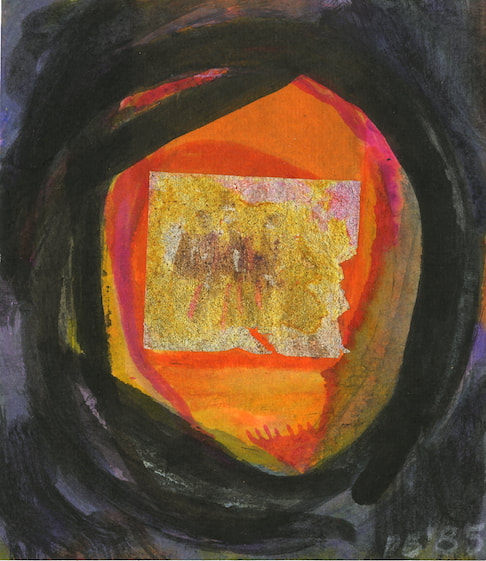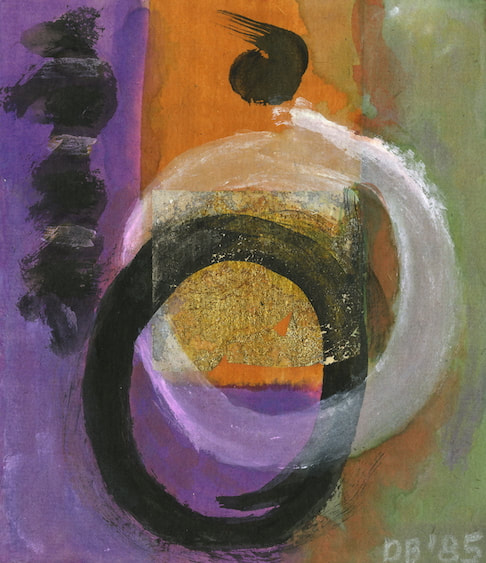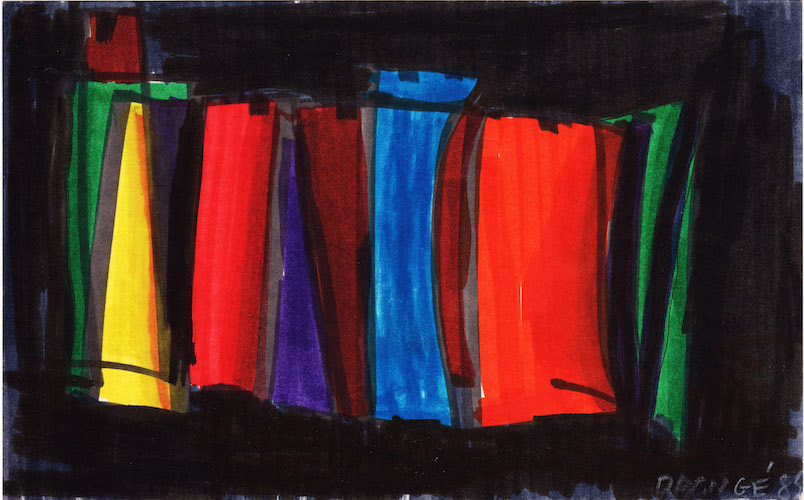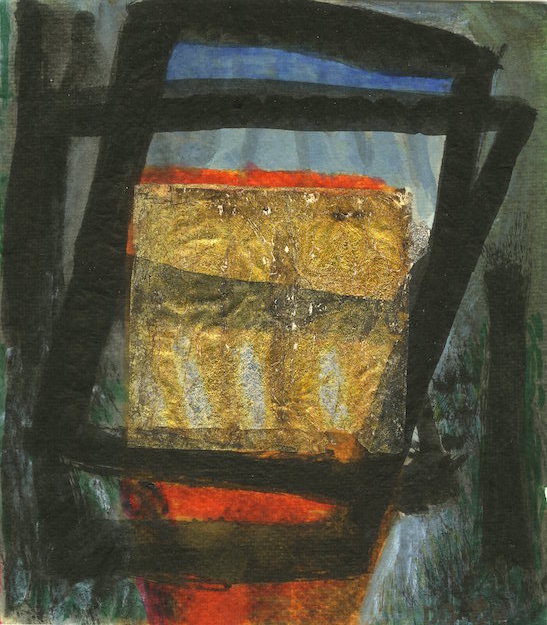|
Later Work (1980 - 1991)
Throughout the 1980s, Bongé continued to create a very strong body of abstract work, including some monumental oil paintings. These works are rich in color, with a sense of depth and movement, and very defined compositions. They are softer in gesture yet more vibrant in color. They are expressive in a poetic way that is reminiscent of post-minimalist lyrical abstraction. These later pieces are often composed with more defined elements and edges, with a sense of depth or perspective layering, yet still fully abstract. And they explore conceptual themes. Indeed, it is during this time that she created a series of paintings referring to the transcendent (Buddhist) concept of the “Void”. In contrast to some of the very large works, during the late 1980s, Bongé began a series of delicate jewel-like small abstract watercolors. The intimacy of these little watercolor paintings appealed to her, and they became her preferred medium. Many of these works were on small “Joss” papers. Also known as spirit money or ghost money, joss paper consists of sheets of bamboo or rice paper cut into squares each centered with a small square of gold and/or silver leaf. Used in traditional Buddhist ceremonies, they were available at the local Asian markets. These works too are vibrant in color and carefully composed. “It became a special challenge,” Dusti said, “to make it seem as if I had placed that little square right there.” Dusti Bongé painted her last work in 1991. |
|
© 2023 Dusti Bongé Art Foundation, Inc.
For personal and/or educational use only. Text and images of any works of visual art or any other images contained on this website may not be reproduced, downloaded or modified in any form without the express written permission of the Dusti Bongé Art Foundation. Nothing contained in this website shall be construed as conferring any license or right to any copyright on this website. All artwork, images, writings, and statements by Dusti Bongé are © Dusti Bongé Art Foundation, or © Paul Bongé.
|


















































